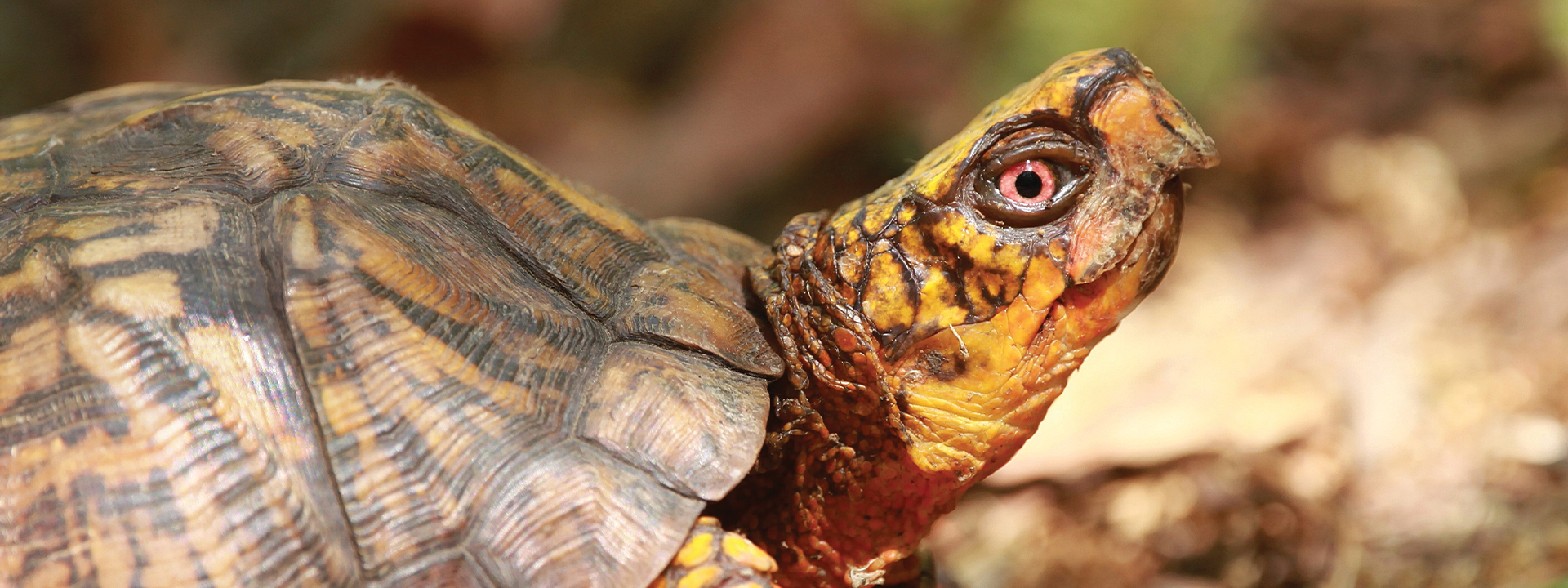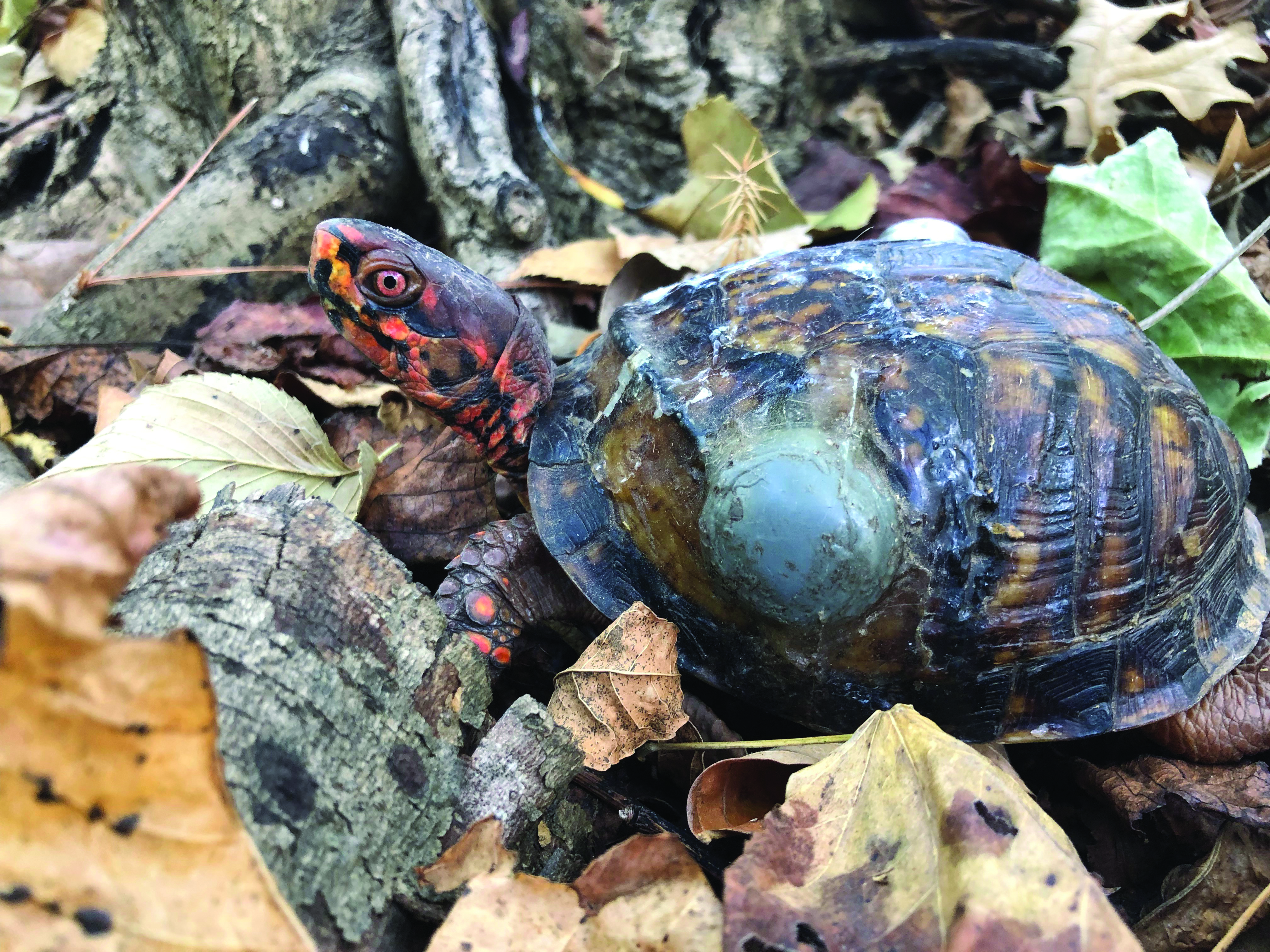

By Dr. Will Selman
If you've spent time wandering through the woods of Mississippi, you've likely strolled past several box turtles without noticing, as they seamlessly blend into their surroundings. With remarkable camouflage, these woodland residents, often likened to forest ninjas, have been the focus of significant research undertaken by undergraduate biology students at Millsaps College since 2017.
Understanding Box Turtles
The box turtle, scientifically known as *Terrapene carolina*, is a species native to the eastern United States, including nearly every Mississippi county. Once abundant across its natural range, populations are waning due to threats such as road mortality, habitat fragmentation, urban development, and illegal collection for the pet trade. Notably, they are less prevalent in the Mississippi Delta, where intensive agricultural practices have altered their natural habitats. Despite their widespread presence in diverse environments—from the wetlands along the coast to mixed hardwood-pine forests—the scientific research on their specific habitats within Mississippi remains limited.
The Study Begins
In May 2017, guided by Dr. Will Selman, Millsaps College students embarked on a box turtle study in central Mississippi, focusing on capturing, marking, and measuring these turtles. Initially, they observed one or two turtles each morning but suddenly encountered perplexing conditions in July when no turtles could be found. The questions surfaced: had they relocated? Were they buried underground? Did they take to the trees or somehow fly away?
To track their movements and behaviors, the team deployed ten radio transmitters on six male and four female turtles in April and May of the following year. Students regularly ventured into the field to collect data on the turtles' locations and habitats. They soon discovered that the turtles had not vanished; instead, they were burying themselves under leaves to escape the summer heat. It became clear that box turtles also hibernate in the winter, typically from early December to mid-March, emerging in spring when males begin roaming in search of mates.
One male turtle, humorously dubbed Boogie, demonstrated notable persistence as he travelled up and down a steep hillside weekly, presumably in a quest for companionship.
The Challenge of Tracking
Finding box turtles can be quite a challenge due to their tendencies to avoid open areas and prefer the shade of closed-canopy forests, where they thrive among fallen leaves and dense vegetation. Often, students could be within mere feet of a turtle, guided by the signal from its transmitter, yet it would sometimes take 10 to 15 minutes of careful searching through the thick underbrush to locate the hidden creature. On one memorable occasion, a turtle was ultimately unveiled nestled in the hollow of a log.

Habitat Preferences
The research revealed varied habitat preferences among the turtles. Despite abundant wetlands at the study site, turtles were rarely spotted in the water—this behavior contrasts sharply with their Gulf Coast counterparts, who often explore forest pools along bayous. Many Gulf Coast box turtles have even been seen swimming and disappearing into the Pascagoula River, indicating differences in habitat usage based on regional adaptations.
Interestingly, while some box turtles thrived in natural settings, others ventured into human-impacted habitats, such as forested fencerows and gardens. These areas duplicated elements of forest environments, providing necessary cover. Unfortunately, these habitats can expose turtles to new dangers. A turtle named Goldie, distinguished by her striking golden shell, was tracked extensively until her life was tragically cut short by construction activity along her frequented fencerow.
Meanwhile, Deuce, another turtle marked in May 2018, seemed to have met a similar fate when his transmitter failed. However, an unexpected photograph in October 2023 revealed that Deuce was very much alive, suggesting that the students might have unknowingly walked past him multiple times during his years of disappearance.
Implications for Conservation
The insights gleaned from this study have illuminated aspects of box turtle biology previously shrouded in mystery, highlighting their challenging-to-detect presence in Mississippi’s woodlands. Such knowledge carries important implications for land use. For instance, if construction work is planned in a forested area, this research suggests it would be prudent to schedule activities between November and March, aligning with the turtles' hibernation period.
Next time you find yourself in the Mississippi woods, keep an eye out for these elusive turtles. If you're fortunate enough to spot one, consider it a rare treat—the chances are high that many remain hidden right beside you, stealthy and camouflaged in their natural habitat.
Will Selman, Ph.D., is an associate professor of biology at Millsaps College. Langston Haden, a post-graduate biology student working on his Ph. D. at the University of Southern Mississippi, contributed to this article.